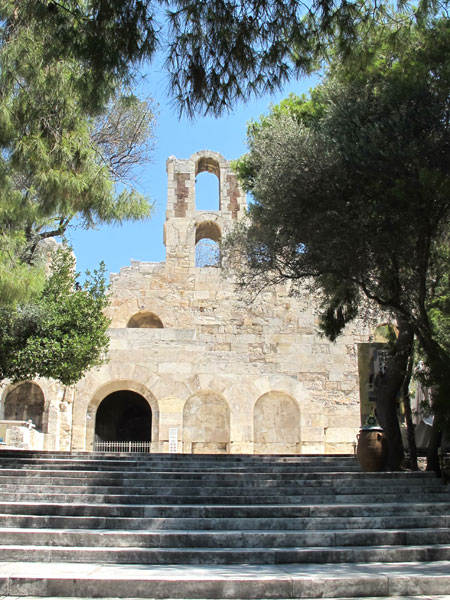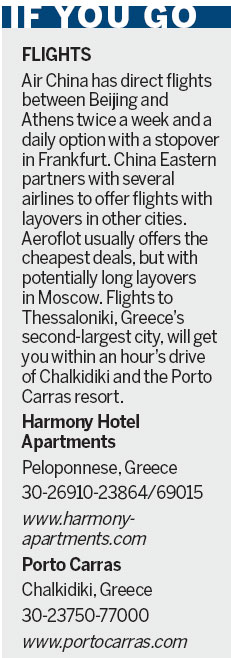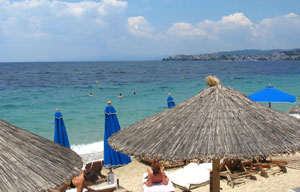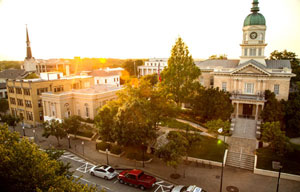Blue sky, blue sea
Many of the country's islands are deservedly famous - Crete is a photogenic paradise of beaches and olive groves, while Santorini's spectacular sunsets draw 50,000 Chinese couples every year as a wedding location.
Our July trip was all on the mainland - "better for swimming", we're told, since the sea around the islands can be nippy, and "better for wines". In fact, the vineyards we saw on two interesting peninsulas produce some of the country's best-known and most-exported wines, many with a presence in China.
After two pleasant days roaming the streets of Athens, we were off to the Peloponnese peninsula. For history buffs, that evokes an ancient war (get your Sparta T-shirt here!). Passing through nearby Corinth, Christian visitors may be reminded of St. Paul, who wrote scolding letters to locals there a few centuries ago.
Happily, nobody scolded us, despite our slothful and often gluttonous ways.
We took a morning dip in the beautiful pool outside our suites at the Harmony Apartment Hotel, and spent afternoons enjoying the beach just a five-minute walk away. We dined on big platters of seafood - from delicate fish to lemon-drenched grilled octopus - at seaside cafes thanks to our hosts at the Cavino winery.
The Peloponnese area is a real community. Despite the financial crisis, most homes in the area belong to locals or to city families who have a vacation home here on the coast, though the owners may be more dependent on seasonal renters than they once were. The beaches are gorgeous but surprisingly quiet; many swimmers in the surf are middle-aged folks who have come here to while away summer days for decades.
Nearby there is pleasantly casual shopping and a few options for excursions. Delphi, Mount Olympus and Athens are all within a two-hour drive, so Peloponnese is a good jumping-off point for a week of exploring Greece.
We opted to tour a small olive-processing center and then visit Megalo Spileo. That means "Monastery of the Big Cave": This eight-floor edifice was carved into the rock some 924 meters up the mountain, originally built by two monks in the 4th century AD.
Open to the public, the monastery boasts exquisite murals, relics including a finger-bone from St. Theodore, and many beautiful icons, including an image of the Virgin and Child reportedly crafted by the evangelist St. Luke out of beeswax, mastic gum and perfume. That icon has turned black from age (and perhaps from smoke when the Nazis burned the place in 1943), and its image is featured on gift-shop souvenirs from plaques to postcards.
 |
|
This ancient temple sits near the Acropolis in Athens. |
A path from the monastery leads up to cliffs where we could see remains of a castle, a few cannons and the monks' old vineyard - now leased to the Cavino company, which produces a premium wine labeled Domain Mega Spileo.
Our next stop was the grand resort of Chalkidiki, which would have been a five-hour van ride away if we hadn't stopped for a long, relaxing lunch at a riverside cafe. But we arrived in plenty of time to catch the sunset behind the clutch of luxury yachts at Porto Carras resort.
Focused on the glassy harbor's fiery glow, we almost missed the two hotels - easily the biggest edifices on the shoreline - because their clever architecture mirrors the look of two grand cruise ships.

















